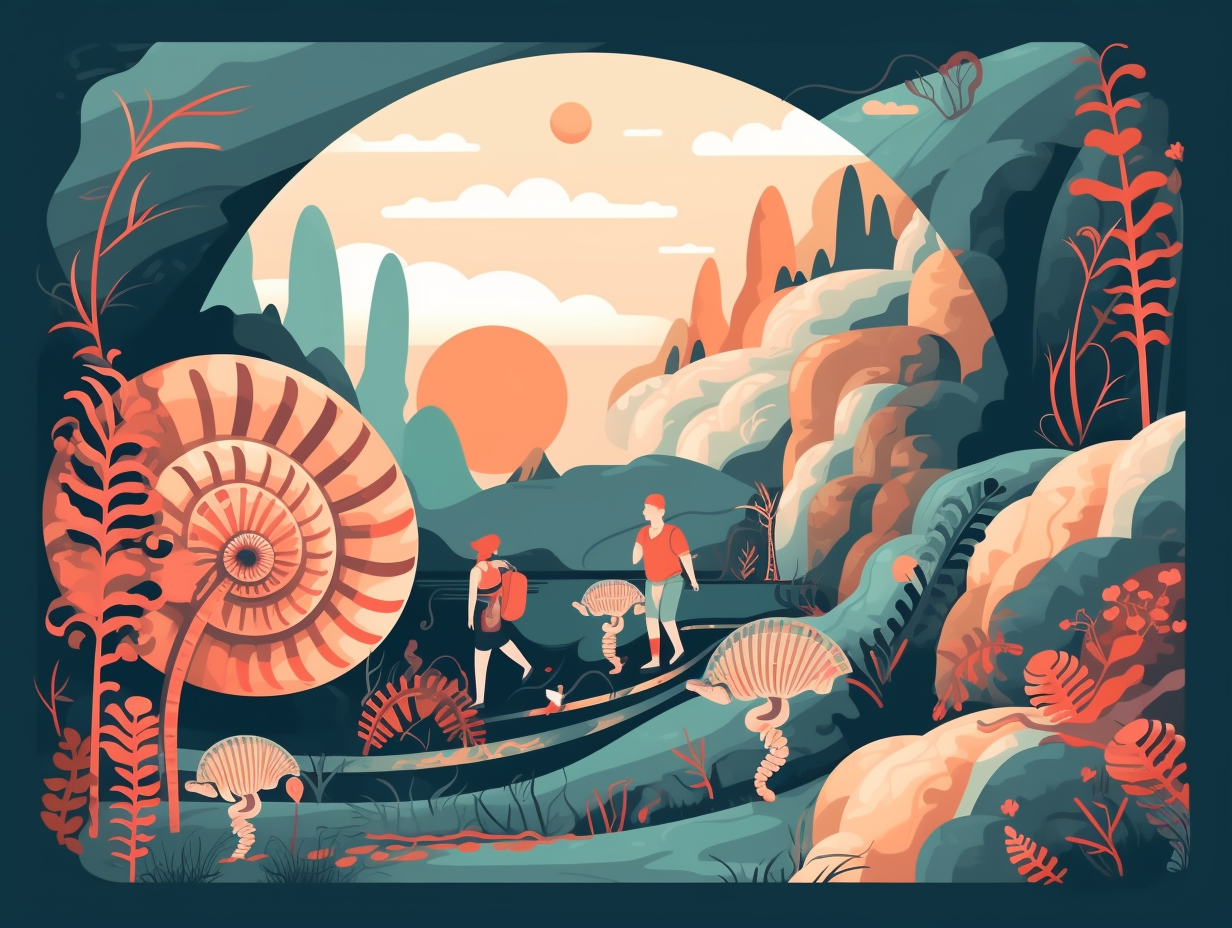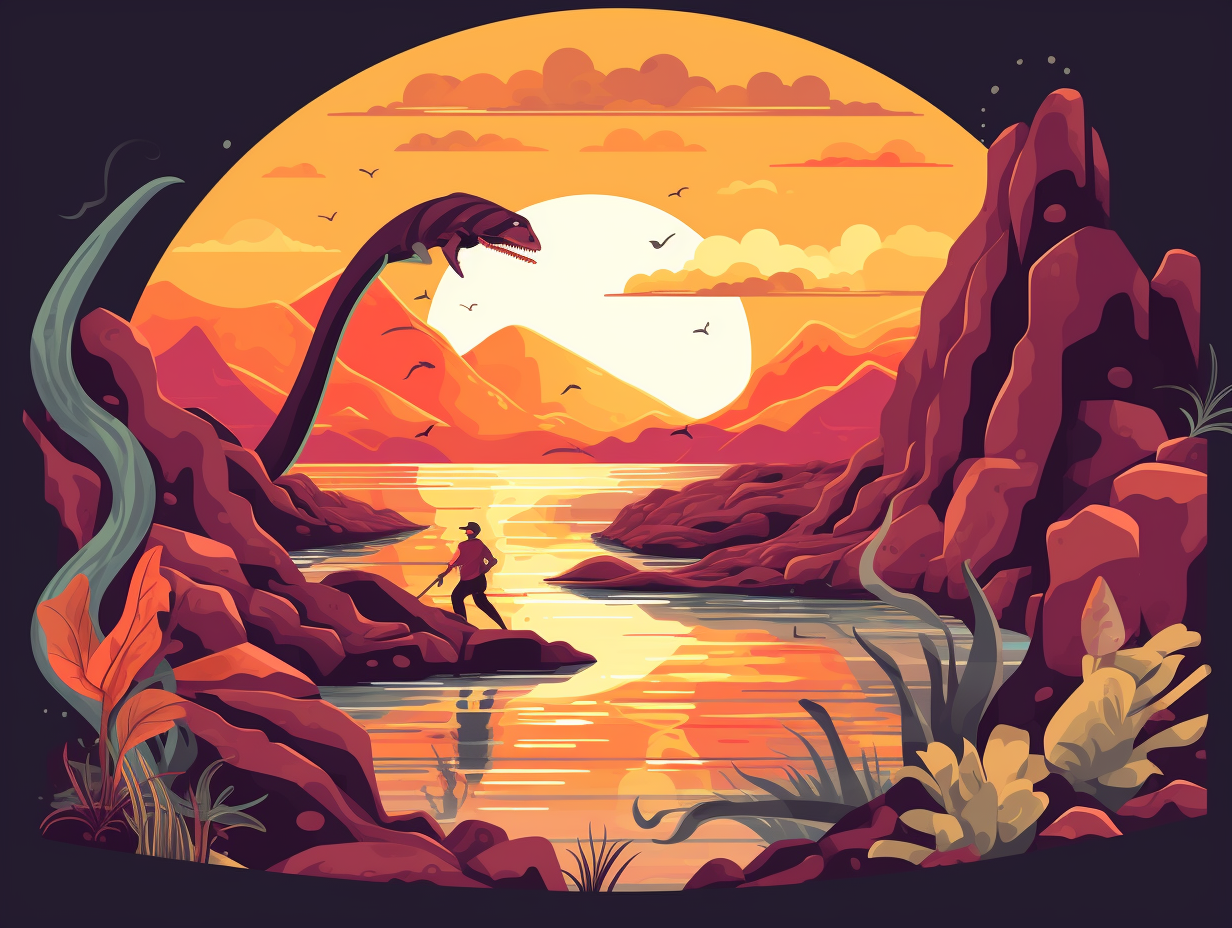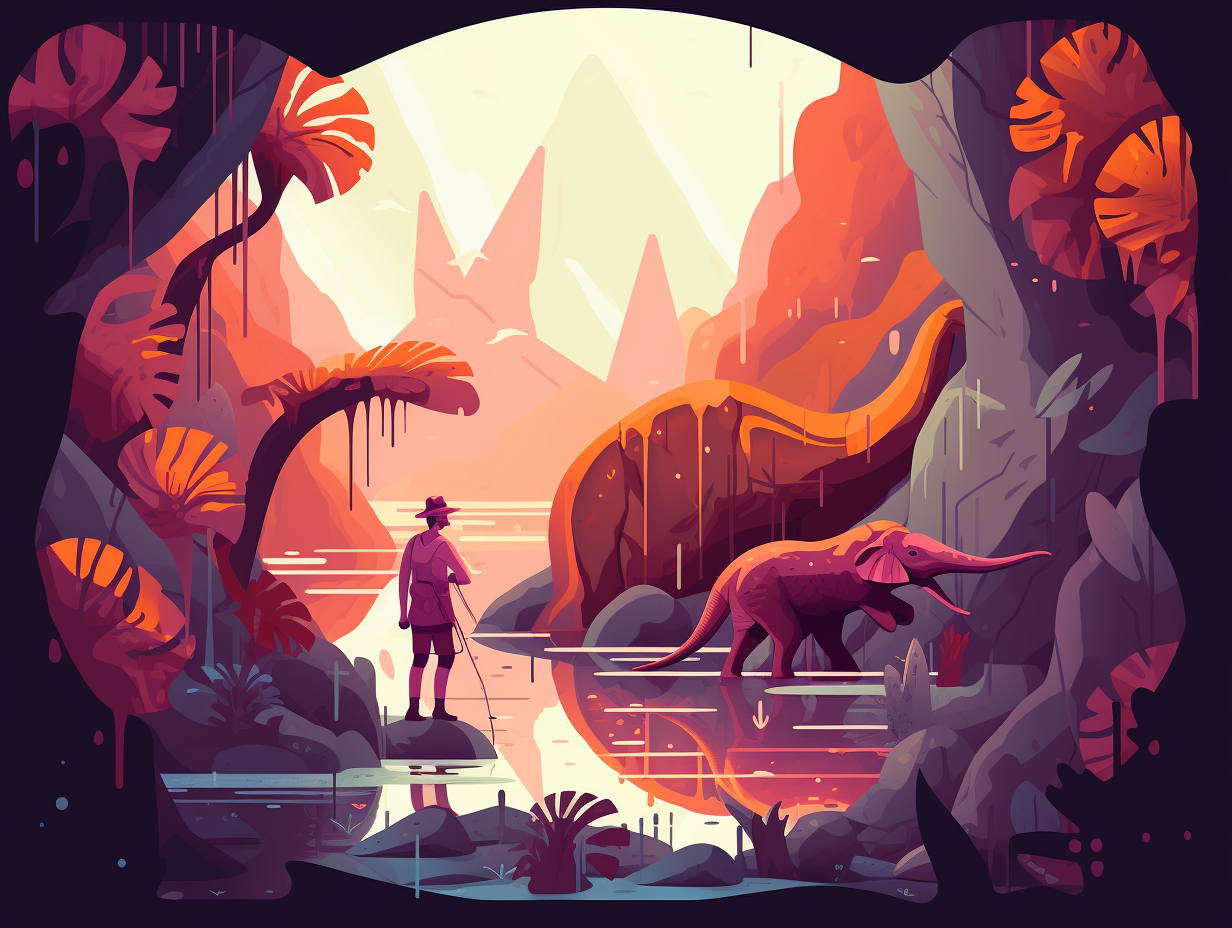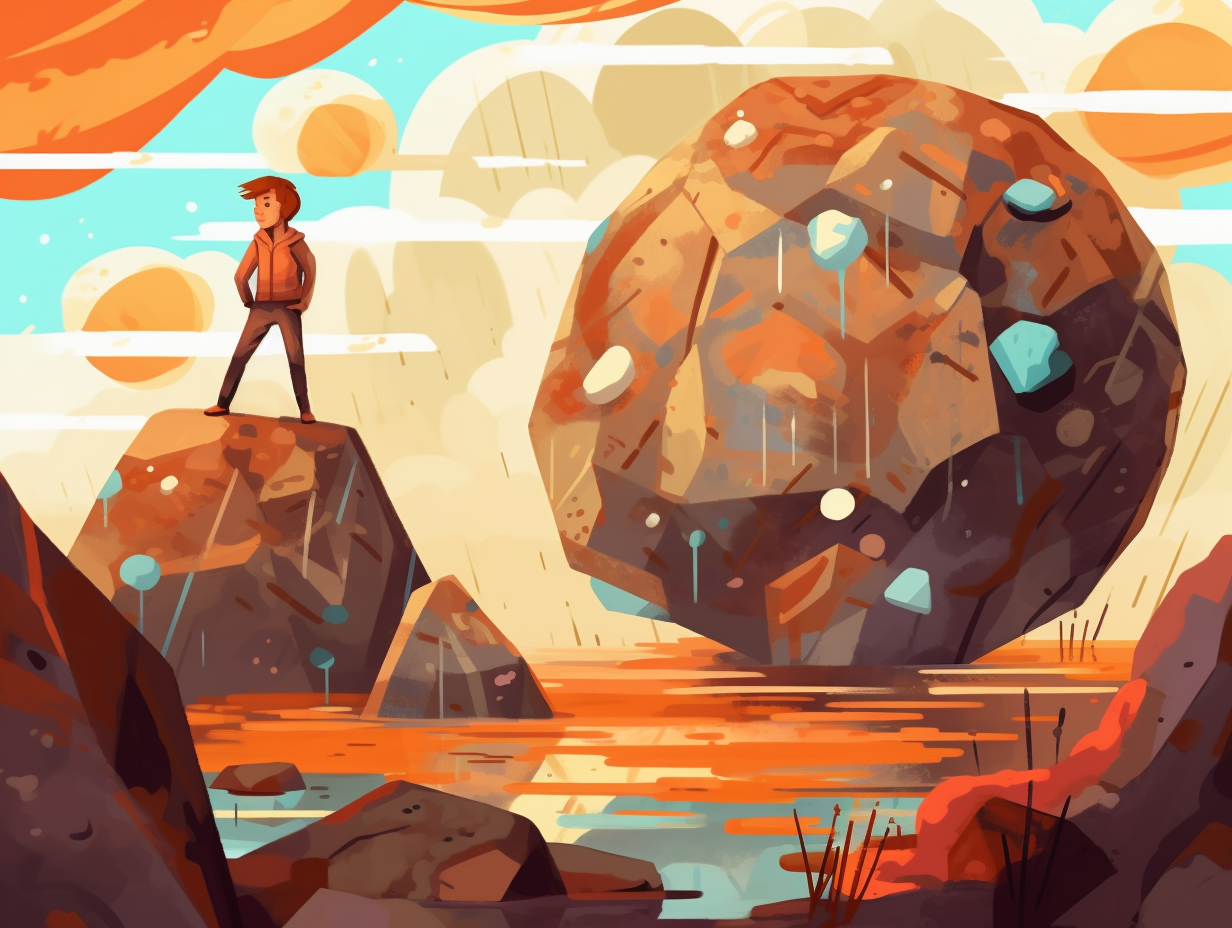Discover the Prehistoric World: Top 12 Fun Facts About Paleontology You Never Knew!

1. T. rex's Leisurely Chase
Lucky for the Flintstones, there wasn't a Fast and Furious: Jurassic Edition: T. rex could only reach a maximum speed of 15 to 25 miles per hour, with a slow walking pace of 3 miles per hour – slower than the average human. This sluggishness was due to its 40 feet length and 9 metric tons of weight, relying on its tail to counterbalance each step and avoid injuries. So when imagining yourself outrunning a T. rex, picture more of a leisurely saunter than a high-octane chase.
Source => forbes.com
2. Lagerstätte Fossils' VIP Club
If fossilization had a VIP club, Lagerstätte fossils would be sipping ancient cosmos in the back booth: These exclusive specimens, formed by rapid burial in ice or volcanic ash, preserve soft tissues, and serve up incredibly detailed dino dirt on former Earth-dwellers. One prime attendee is Lyuba, a baby woolly mammoth found chilling in 40,000-year-old ice.
Source => australian.museum

Did you know ancient dinosaur parents were extremely dedicated to protecting their eggs? Uncover the truth about the devoted Citipati osmolskae parents in these fascinating fossil facts! 🦖🥚
=> Fun Facts about Fossils
3. Dino-Detectives Investigate Footprints
Step aside, Sherlock Holmes, for the dino-detectives have arrived: By studying ichnites or dinosaur footprints, preserved in ancient mud and on shorelines, paleontologists can delve deep into the past to uncover clues about how these prehistoric creatures moved, lived, and even the size and shape of their feet, making it elementary, my dear T. rex!
Source => nhm.ac.uk
4. Diplodocus' Dental Dentures
Diplodocus: the denture-wearing dinosaur with a penchant for nature's toothbrush! This long-necked giant had a Netflix-worthy line-up of teeth replacements, swapping out pearly whites faster than your grandma loses her dentures: Fact is, Diplodocus replaced one tooth every 35 days due to a diet of abrasive, silica-rich plants and ground-level snacks, keeping its dental game stronger than a T-Rex's bite!
Source => livescience.com

5. T. rex's Epic Growth Spurt
Talk about a growth spurt from the Cretaceous period! Tyrannosaurus rex was the prehistoric teen who'd go to bed fun-sized and wake up supersized: This mega-predator grew at a staggering rate of 4.6 pounds per day for about 14 years, outgrowing its vulnerable hatchling phase and spending a whopping 30 percent of its lifetime as one of the largest and most feared carnivores to ever stomp the Earth.
Source => amnh.org
6. Aethiocarenodea's Paleontological Debut
In a plot twist worthy of any B-rated sci-fi film, a new insect joins the cast of prehistoric characters: Meet Aethiocarenodea, a fossilized species revealing that nature's talent show spanned across millions of years, thanks to the ever-amusing world of paleontology.
Source => smithsonianmag.com
7. Megaraptor's Thumbs Up
Who would've guessed that Megaraptor was just trying to give the world a big, pointy, fossilized thumbs up, only for paleontologists to mistake it for a dinky dromaeosaur? Oh, how the tables have turned: Turns out, Megaraptor's ginormous claw actually belonged on its first finger, boasting uniquely recurved sickle-shaped claws that make spinosaurids green with envy. And now, this bad boy safely resides in the basal tyrannosauroid or coelurosaur category, with some even calling it a neovenatorid. Rock on, Megaraptor!
Source => en.wikipedia.org
8. Ancient Diets Revealed by Fossilized Poop
Talk about a blast from the past: paleontologists can study ancient creatures' diets by examining their fossilized poop, which reveals vital information on feeding habits and even their behavior within their ecosystem.
Source => ncbi.nlm.nih.gov
9. Dinosaurs' Rock 'n' Roll Tummies
Guess what? Even dinosaurs needed a little help digesting their food – they'd just swallow rocks and let them "rock 'n' roll" in their tummies: Recent research reveals that the use of gastroliths, or small stones, to aid in digestion was not a universal trait in dinosaurs, as their prevalence and purpose remain hotly debated subjects within the paleontology world.
Source => ucmp.berkeley.edu

10. Dino Mama's Egg-Laying Business
It's not just humans who take their egg-laying business seriously, dinosaur mamas had it all figured out when it came to their babies' nests: The discovery of well-preserved Megaloolithus siruguei egg clutches in the Upper Cretaceous Tremp Formation in Catalonia shows that female titanosaur sauropod dinosaurs laid 20-28 eggs per nest. These super-sized nests were scratch-dug by the dino mamas, using their asymmetrical, inclined, and laterally compressed titanosaur pes unguals - a barely pronounceable dino term for their weirdly-shaped feet.
Source => ncbi.nlm.nih.gov
11. Sky's Gigantic Divas: Pterosaurs
In a world where size does matter, even the sky had its own gigantic divas: Meet Quetzalcoatlus and the azhdarchid pterosaurs, the largest flying animals to ever sashay through the prehistoric skies. The serious reveal: Sporting wingspans of up to 11 meters (36 feet), their ability to remain airborne remains a hotly-debated squabble among scientists, as their supposed body mass may have rendered them less than graceful flyers, causing them to pale in comparison to their more petite, aerial counterparts.
Source => en.wikipedia.org
12. Microraptor's Dino Tinder Strategy
Before there was Dino Tinder, there was Microraptor's shimmering plumage to win over dino-dates: The presence of iridescent feathers on Microraptor suggests that these flashy colors were used for display purposes like courtship and social interactions, even before the evolution of flight, giving us a whole new perspective on dino dating strategies and early dinosaur diversity.
Source => nsf.gov
Related Fun Facts




















